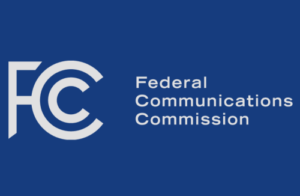As the Drone Girl, I’m always getting questions from new pilots! This one is about launching a business shooting vineyard aerial imagery. To help me answer this one, I’ve enlisted the help of Patrick Sherman. Like me, he’s a long-time drone enthusiast who has risen to become a professor at Embry-Riddle Aeronautical University specializing in, you guessed it, drones!
One reader wrote in to say: I’m running a new drone business and recently did some pro bono work for a vineyard who now wants to pay me! The only issue: I have no idea how much to charge. Our original agreement was mutual ownership of the imagery I captured so that I could use it for promotional use. I was already on-site and just asked the owner if they were interested, so no travel costs incurred. Any help is appreciated!
Patrick Sherman, who is also the author of the book “Getting Started with Drones and Model Airplanes” knows a thing or two about launching a drone business. Given that, I asked him to help me answer this question.
Here was his response (and if you want more of his insights, grab a copy of his book today!):
Congratulations on your new business and especially on the fact that one of your customers has volunteered to pay you! That’s a terrific feeling and a sure sign that you’re doing something right. To be sure, what to charge is an extremely difficult question to answer – and one that I myself struggle with whenever I do freelance work. I’m honestly terrible at deciding how much I’m worth and then asking for it.
I guess I would have three suggestions for you in this case:
1. Know your worth (and personal costs)
Take a clear-eyed look at what it will cost you to do the work and what your time is worth. Every time you fly, you put your aircraft at risk, along with anything below it. As a small business owner, you should have liability insurance at the very least. If you have the misfortune to drop an aircraft on a person, the cost can be huge. That’s a burden you don’t want to shoulder alone. So, you want to be able to cover the cost of insurance, set aside money for a new aircraft down the road, along with the supplies that it takes to keep your current aircraft flying.
And, of course, your time is worth something. No doubt you’re working as a freelancer, which means at the end of the year your tax rate on that income will be effectively double what it is when you draw a salary from a full-time employer. Finally, remember that you are a professional who brings their own equipment to the job site. What does a dentist or an electrician charge on an hourly basis? If all of this sounds like it’s going to add up to a pretty big number, you’re not wrong…
2. Factor in the laws of supply and demand
You need to ask what the market will bear. The law of supply and demand still holds, even in the futuristic world of drone services. You may want to charge $500 an hour to fly, but if other drone operators with comparable skills and equipment are willing to do it for $100 an hour, you’re not likely to find many customers. So, do some research. Find out what other drone companies in your area are charging and price yourself accordingly.
Keep in mind that drones are new and sexy, which means that the field is crowded with people who want to be part of the industry. This can create irrational downward pressure on hourly rates. After all, people are so desperate for work that they will actually charge less than is required to make a living doing the job.
My wife owned her own video production business for decades. Every few years a new crop of companies would enter the market. When they couldn’t make enough money to cover the cost of their expensive equipment, they would start slashing their rates just to get work. The result? Revenues were depressed across the entire industry.
3. Just ask
Of course, I’ve not been present during your discussions with your prospective employer. Thus, I can’t speak to your relationship with them. However, if it’s a good one, you might just be honest and say you’re not sure what to charge. Seek their advice! The downside is that they aren’t going to bankrupt themselves paying you a price of their own choosing. But, if there are good and honest people who respect you – which it sounds like they do because they volunteered to pay you – they might be willing to give you some good advice, along with some money.
Best of luck on your new venture!
-Patrick Sherman
Whether your field is vineyard aerial imagery or not, are you starting out as a remote pilot? Do you have other questions you’d like Patrick to answer? The chances are that he already has answered it! Check out his new book, “Getting Started with Drones and Model Airplanes.” It’s published by Aviation Supplies & Academics, which is the leading publisher of aviation-related books in the U.S. Copies are available on Amazon! If you have a question for Drone Girl, contact her here.
The post How much can I charge to shoot vineyard aerial imagery? appeared first on The Drone Girl.






